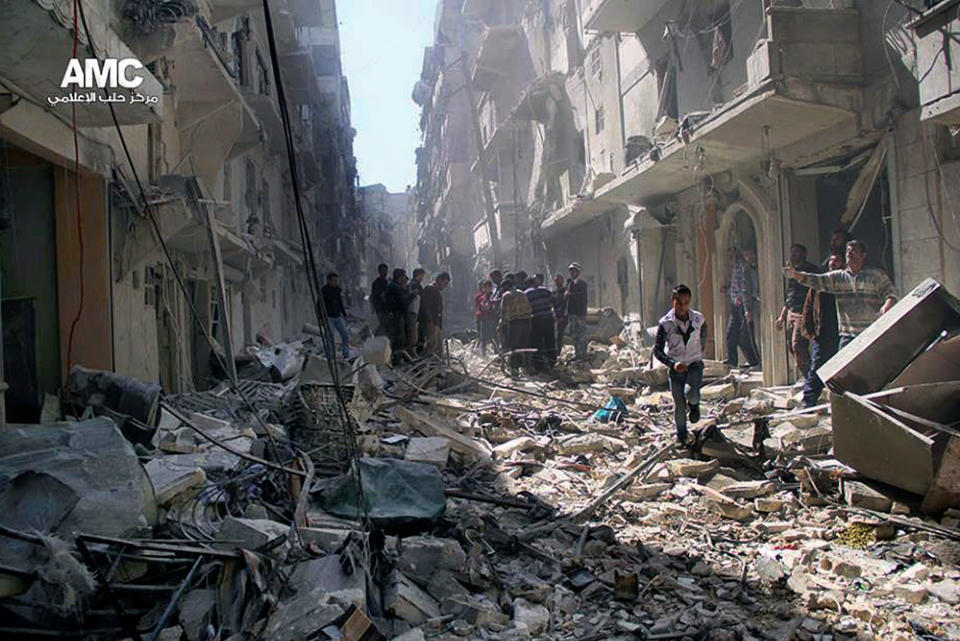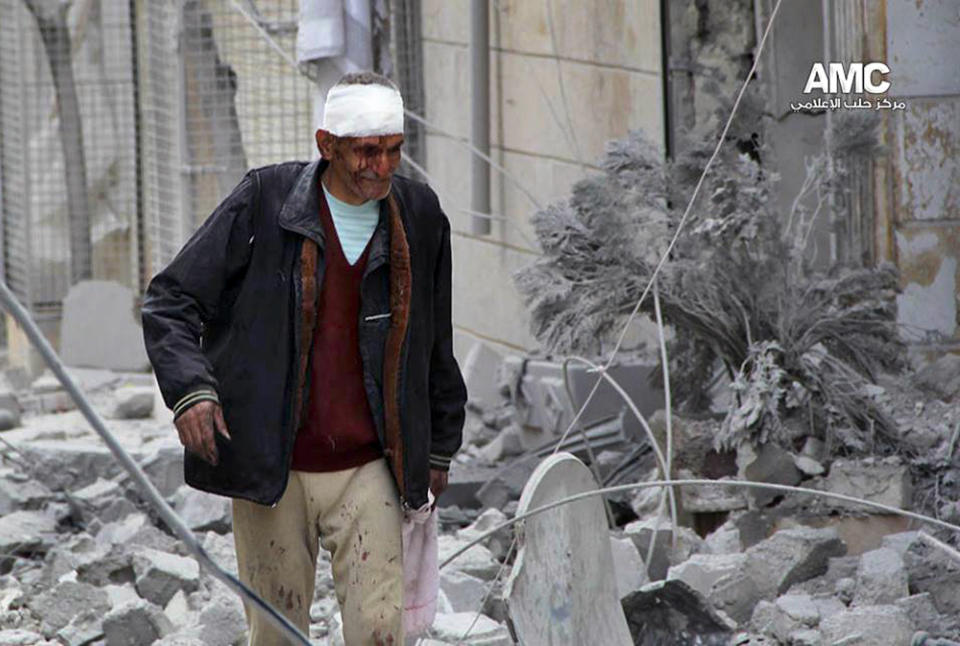Syrian troops capture famed Crusader castle
BEIRUT (AP) — Syrian troops captured a famed Crusader castle near the border with Lebanon on Thursday, running the two-starred government flag high above the stone ramparts of the 12th century fortress after days of intense clashes with rebel fighters.
Lebanese private broadcaster Al-Mayadeen TV aired footage of Syrian soldiers walking unopposed into the Crac des Chevaliers, the towering hilltop citadel. The loud crackle of celebratory gunfire could be heard as troops explored the sprawling castle, which is a UNESCO World Heritage site.
The military's push into the Crac des Chevaliers marked the latest in a string of battlefield gains for President Bashar Assad's forces. Government troops have seized at least four towns and villages in the past two weeks near the border with Lebanon as the army tries to sever opposition supply lines across the rugged, mountainous frontier.
The sharpest blow to the rebels came with the fall of their stronghold of Yabroud near Lebanon's eastern border on Sunday. But the government capture of the Crac des Chevaliers, which dominates the surrounding valley and terraced hills below, marked another painful setback, for symbolic reasons as much as strategic. Rebels had controlled the castle since 2012.
"Our efforts, those of the Syrian Arab Army and the National Defense Forces, were crowned today by raising the Syrian flag on the Crac des Chevaliers," an unnamed Syrian army colonel told Al-Mayadeen. "The battle had been going on for more than a month during which several nearby villages were liberated."
Syrian state television said troops "wiped out terrorists who were entrenched in the castle." Syrian authorities refer to opposition fighters as terrorists.
An activist based in the nearby city of Homs said the citadel fell into the hands of government troops earlier Thursday, a day after rebels and the government agreed that opposition fighters be given safe passage to Lebanon. The activist, who goes with the name of Beibares Tellawi, told The Associated Press that troops captured Hosn, the town at the foot of the castle, after an intense bombardment by the Syrian air force.
The Britain-based Syrian Observatory for Human Rights said fighting around Hosn killed 12 fighters Thursday. The dead included the local leader of the Jund al-Sham Islamic group. Lebanese television stations identified the dead commander as Abu Suleiman Dandashi, a Lebanese national.
Syria's state news agency said "a number of terrorists were killed" as they tried to flee Hosn toward Lebanon. An activist in Homs who goes by the name of Samer al-Homsi said people fleeing Hosn were ambushed near the Lebanon border and many were feared dead.
The Crac des Chevaliers is considered one of the world's best-preserved castles from the era of the Crusades. But, like nearly all of Syria's rich archaeological and cultural heritage sites, the current conflict has taken a terrible toll on the citadel. Over the past 18 months, amateur videos posted online have shown shelling and airstrikes hitting the thick stone ramparts.
In the footage broadcast Thursday, the fortress looked fairly intact from the outside.
Still, damage to the Crac des Chevaliers and Syria's other cultural gems prompted the United Nations last week to warn that ancient Christian and Muslim sites in the country are under attack and to demand an immediate halt to the destruction of the country's cultural heritage.
U.N. Secretary-General Ban Ki-moon, UNESCO Director-General Irina Bokova and the joint U.N.-Arab League mediator on Syria, Lakhdar Brahimi, issued a joint statement citing "alarming reports" that Syrian historical sites are being deliberately targeted for ideological reasons.
Six sites in Syria have been designated as World Heritage sites by UNESCO, the U.N.'s cultural and educational agency, and the officials said some have suffered "considerable and sometimes irreversible damage." They listed the Crac des Chevaliers as one of them.
Also Thursday, a senior humanitarian official said the first convoy carrying desperately needed aid supplies via Turkey crossed the border into Syria.
U.N. regional Humanitarian Coordinator Nigel Fisher said that eight trucks carrying food supplies, blankets, mattresses, family kits and medical supplies began unloading Thursday night in the Syrian city of Qamishli. He said the convoy is made up of 79 trucks total.
Fisher said in a statement that the delivery marks the first time in three years that the U.N. has been able to deliver aid to Syria from Turkey.
Previously, the Syrian government has refused to allow U.N. aid in through Turkey, which is a staunch supporter of the rebellion against Assad.
The aid delivery comes almost a month after the U.N. Security Council unanimously demanded immediate access everywhere in Syria to deliver humanitarian aid to millions of people in need. The resolution doesn't threaten sanctions, but it does express the council's intention to take "further steps" if the resolution isn't implemented.
Despite the cross-border delivery, questions linger about the government's willingness to allow in aid to all areas in need. The first shipment will be limited to the Hassakeh governorate in the northeast, which is primarily controlled by Kurdish militias although the government retains some security outposts.
Meanwhile, the joint mission by the U.N. and the Organization for the Prohibition of Chemical Weapons to rid Syria of it chemical weapons said another batch of chemical agents was removed from the country Thursday, raising the total amount taken out of the country to nearly 50 percent.
___
Associated Press writer Ryan Lucas contributed to this report.



